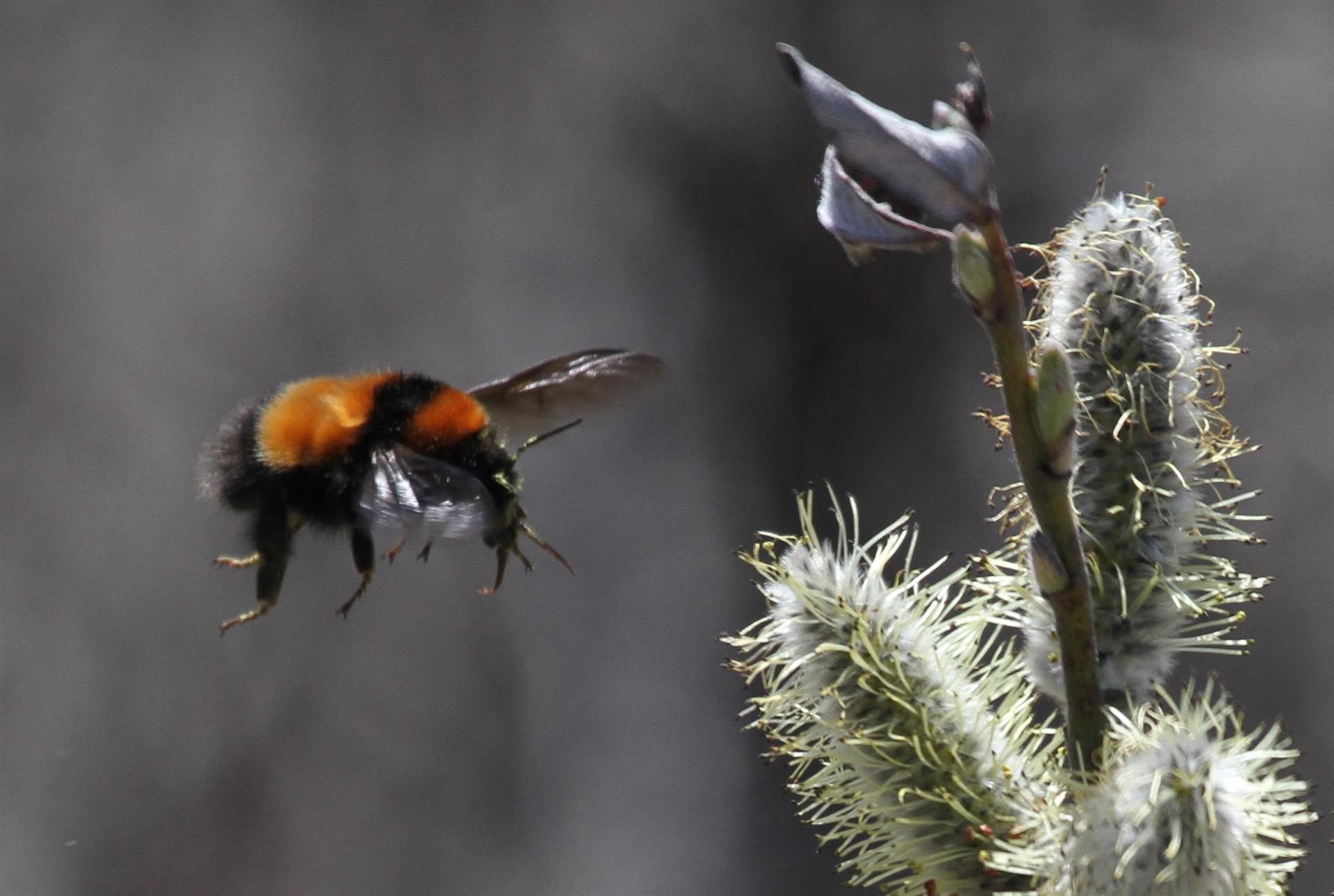The Unlikely Survival of Bees in the Arctic
A new species has been identified in an archipelago once used for Soviet nuclear testing.

The queens of Arctic bee colonies are wrapped in luxurious fur coats that nuzzle around their small, dark heads. As early in the year as the cold allows, they rouse from solitary hibernation—none of their subjects survive the winter—and into the white expanse of the Arctic spring. These shaggy queens, striped black and flaxen yellow, start their hunt for flowers—Arctic rose, bog blueberry, black crowberry. Even in these cold northern reaches of the world, plants need pollination, and much like their flashier southern counterparts, the bees there fly from bloom to bloom, helping themselves to nectar and nudging plant life along.
As cold-blooded creatures in a cold climate, bees in the Arctic must harvest and generate heat any way they can. To fly, their muscles must reach 86 degrees Fahrenheit. They might start to warm up by resting in shallow cups of arctic poppies, which look like a floral array of radio telescopes, tracking the sun and trapping heat. The bees sit there shivering, twitching their muscles until they’re warm enough to take flight. The queen also needs extra heat for her abdomen to begin the incubation of her eggs, as biologist Bernd Heinrich discovered, after hunting down the bees in the Canadian Arctic, “along a river’s wash where melting had occurred and the first purple saxifrage and arctic willows were blooming,” he wrote. The queen has only a few fleeting summer months to birth a colony and raise a new generation.

Beyond the cold, these bees also must escape predators hungry for any morsel of nutrition, as well as survive the effects of climate change, which threaten their particular way of life. It is incredible enough that one species of bee, Bombus polaris, has evolved to handle the Arctic seasons. But there is a surprising amount of bee diversity in the Arctic: B. polaris has a rival, B. hyperboreus, which commandeers B. polaris nests to raise its own young. One of the only other Arctic bees in the world, B. glacialis, was only recently shown to be a separate species, in a paper published in Polar Biology.
The research team that identified B. glacialis is based in Arkhangelsk, Russia, and is on the hunt for “many strange things,” says Ivan Bolotov, the group’s principal investigator, including “Lost Worlds and forgotten creatures.” By “Lost Worlds,” he means evolutionary hotspots, overlooked by scientists but home to unique species and ecosystems, and by “forgotten creatures,” he means a species known only from a few specimens stashed in museum collections. The group has uncovered the ancient history of the Mekong River by looking at the spread of freshwater mussels and rediscovered a freshwater pearl mussel thought to have been extinct. B. glacialis, to Bolotov, is “a possible sign of the unexpected Lost World in the High Arctic.”

This particular bee has been found only on the archipelago of Novaya Zemlya, which the Soviet Union closed off for decades for use as a nuclear test site (130 tests, involving 224 explosive devices). Earlier in the 20th century, explorers and travelers who visited the island had collected specimens of the bees, which were preserved in natural history museums. They were usually assumed to be a subspecies of another bee, but the new genetic analysis from Bolotov and his colleagues indicates that the bees should be considered their own species.
The survival of any bee in the Arctic seems like a small wonder of nature, but Bolotov and his colleagues speculated whether this population had an even more striking, unusual history, even among bees living in extreme places. Much of that part of the world was almost completely covered in ice during the Last Glacial Maximum, around 25,000 years ago. But some scientists think that even in that bleak expanse there were ice-free areas, where a small number of plants and animals lived. It seems possible that the bees of Novaya Zemlya had come to the islands after the ice sheets retreated, but also that they may have lived there through the cold periods, a community of bees even more isolated than it is today.

The results of the new analysis point to the second possibility—that these bees long ago split from other apian lineages and have been evolving separately on Novaya Zemlya ever since. “If this hypothesis is really true and the bee is endemic to the island, this pattern will be the the first reliable sign that confirms the existence of the Ice Lost World … the first known ancient evolutionary hotspot on an Arctic Ocean island,” Bolotov says.
And if he’s right, the islands could again serve as a refuge in the coming years, as the climate warms instead of cools. The areas where species adapted to the cold can make a life are shrinking, but perhaps on the mountainous islands of the Arctic Ocean they could muddle through, just as B. glacialis may have.
















Follow us on Twitter to get the latest on the world's hidden wonders.
Like us on Facebook to get the latest on the world's hidden wonders.
Follow us on Twitter Like us on Facebook